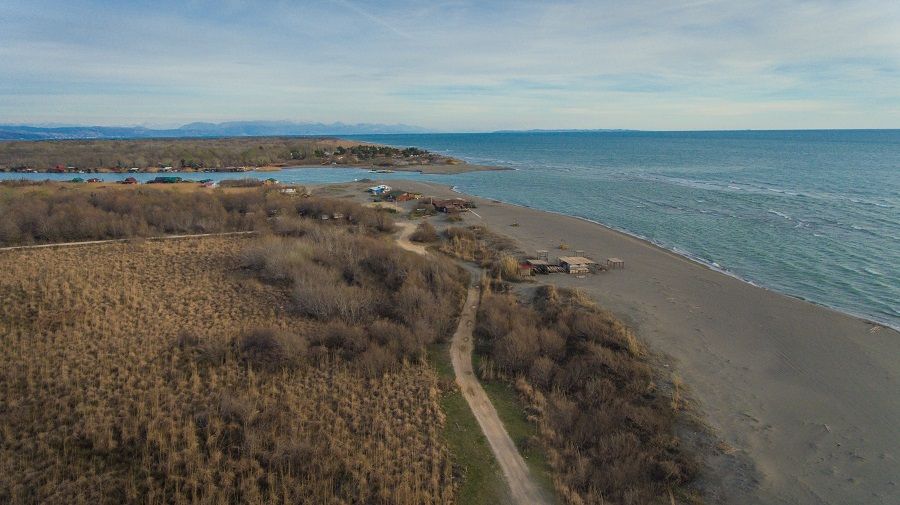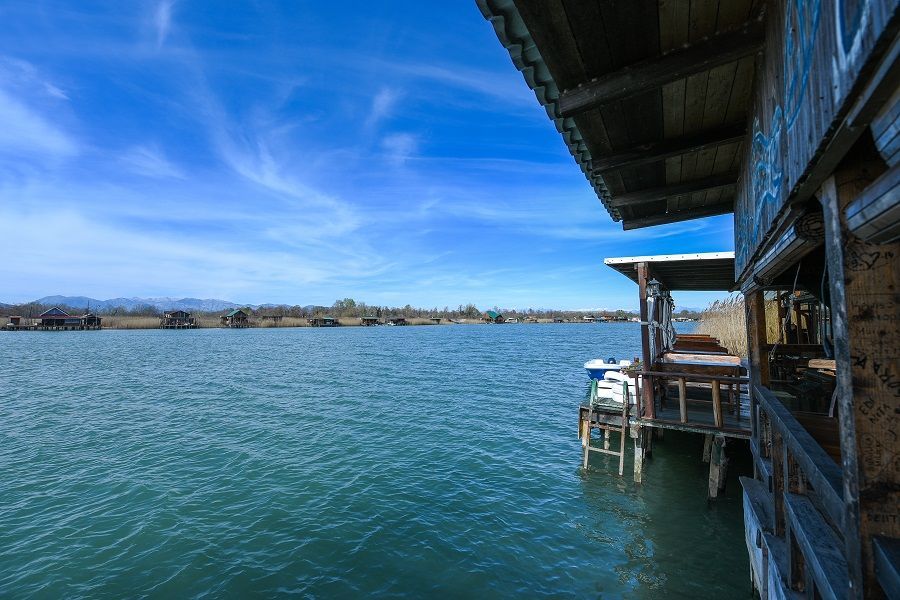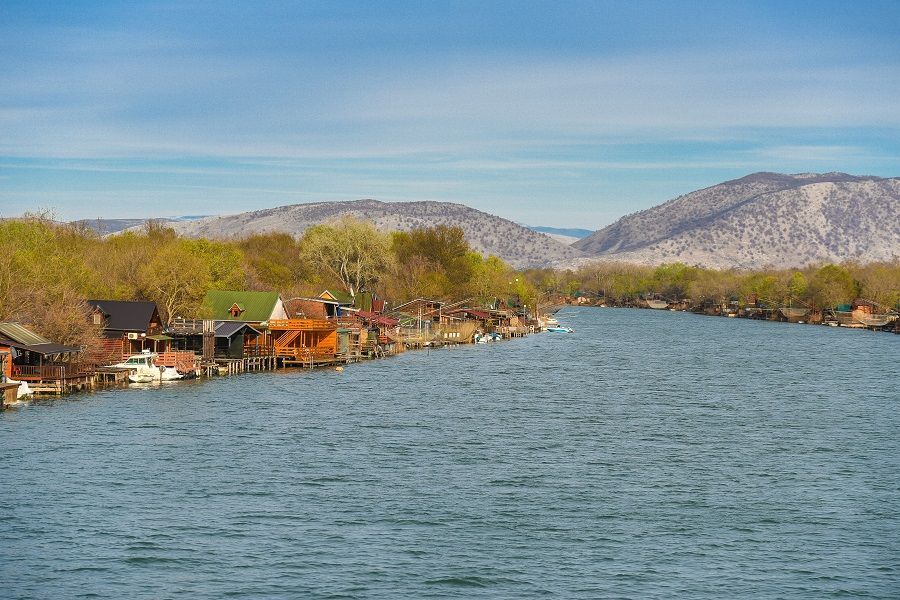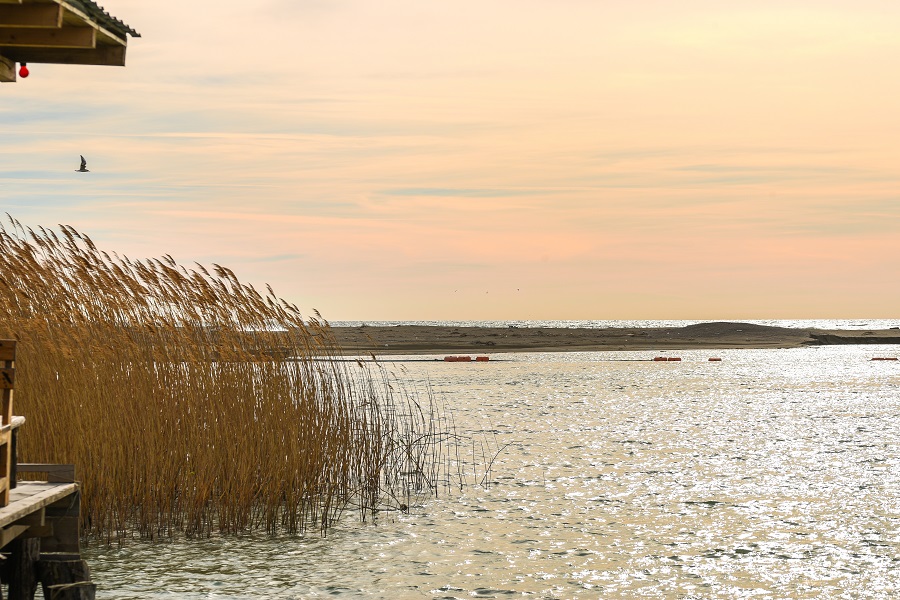September 29, 2019 - Within the Blue Land project, implemented by the Institute of Marine Biology of the University of Montenegro and the Ministry of Agriculture and Rural Development - Fisheries Directorate in Montenegro, an expert mission was recently realized to map the ecosystems, habitats and ecosystem services of the pilot area of the project in Montenegro.
International experts on coastal habitat, ecosystem, and vegetation mapping, Michele de Santis and Fabio Attore visited and analyzed the Blue Land area in our country. It includes the coastal belt of the Great Beach in Ulcinj from Cape Đeram to the mouth of the Bojana River.
Implemented under the IPA INTERREG II Cross-Border Cooperation Program of Montenegro, Albania, and Italy, the Blue Land project aims at establishing a participatory model for coastal and marine biodiversity management, its protection, and sustainable use, getting together science, local communities and policymakers on local and national levels.
The Blue Land project has so far implemented a series of joint training for project partners' representatives by international experts. The local experts gained new knowledge in the field of ecosystem mapping and ecosystem services and then began research work in the area.
 Bojana River Mouth, Blue Land Area in Montenegro, Copyright: Institute of Marine Biology Kotor
Bojana River Mouth, Blue Land Area in Montenegro, Copyright: Institute of Marine Biology Kotor
After biometric and hydrographic surveys of the submarine in the Blue Land area carried out in the spring, the experts from the Institute of Marine Biology hosted last month their colleagues Michele de Santis and Fabio Attore. International experts have been analyzing the coastal situation in detail for seven days.
"The entire Blue Land coastal area, which includes the Great Beach and its hinterland, has been surveyed. It has been identified that there are very significant ecosystems of Great Beach dunes, which are unfortunately largely degraded. The real dunes are preserved only in the southern part of the beach, which is still wild and managed by kite clubs. There are still natural dunes in the area with pristine vegetation. The experts' recommendation and the aim is to ensure the protection of these dunes and prevent their further degradation," said Blue Land Project Coordinator for Montenegro, Dr Ana Pesic, an ichthyologist at the Institute of Marine Biology.
"Another significant ecosystem identified in the Blue Land area is the wetlands that exist in the hinterland of the dunes. Particularly significant are the alluvial, humid forests, which are found along the entire Great Beach. Alluvial forests are protected both through Natura 2000 and through many European standards and laws. They are protected by Montenegrin law as they are susceptible to all possible pressures. If irrigation or drainage regulation occurs, these forests are the first to strike. What was very interesting to the experts is that in our country these forests exist in a large belt. All over the Mediterranean, alluvial forests are under great anthropogenic pressure - they are destroyed, cut down. Here they are still preserved and deserve our great care and protection," explains Dr. Ana Pesic.
 Wooden Cottages along the Bojana River, Copyright: Institute of Marine Biology
Wooden Cottages along the Bojana River, Copyright: Institute of Marine Biology
Tourism development cannot and should not be prevented. But what we need to understand is that people are increasingly turning to nature tourism, frequently looking for the opportunity to enjoy wildlife. The Great Beach and the river Bojana mouth represent a still untouched nature and as such, stand as a valuable potential for the development of eco-tourism.
International eco-expert Michele de Santis visited Montenegro for the first time. He is fascinated by the area of Great Beach and the Bojana river, claiming that this zone is ecologically essential not only for Montenegro but for the whole Mediterranean. "I want to emphasize that this area is one of the most significant wetlands in the whole Mediterranean; it is certainly one of the largest. These areas have been destroyed throughout the Mediterranean as a result of urbanization or drainage for agriculture. Here, on the other hand, the ecosystems are in excellent condition," said Michele De Santis.
 Great Beach and Bojana River Area is Perfect for the Development of Eco-Tourism, Copyright: Institute of Marine Biology
Great Beach and Bojana River Area is Perfect for the Development of Eco-Tourism, Copyright: Institute of Marine Biology
Experts have identified four basic ecosystem types in the Blue Land area. In addition to the ecosystems of the Bojana River, and the dune ecosystem, as very significant, de Santis points out the alluvial forests in the hinterland of the Great Beach. "It is observed in this zone that many trees die during the summer months. We need to investigate why this is happening and whether there is any way to prevent it. What we can say without a doubt is that this area is well suited to promote and support the development of eco-tourism. Eco-tourism is a great development opportunity for this area."
De Santis believes that the Blue Land project is a significant start-up step to establish comprehensive protection for this valuable area, which is exposed to numerous pressures. One of the main problems noted by the experts during the fieldwork is the lack of a functional waste management system. "It is a great pity because the area is beautiful, so it is not very nice for tourists to walk and ride in the garbage. I believe that the Blue Land project looks at this space in all aspects excellently. I see its greatest importance in bringing the values and potentials of this space closer to the local community and governing bodies, so that we can witness its sustainable development in the future."
 Bojana River Entering the Sea at Great Beach, Ulcinj, Copyright: Institute of Marine Biology
Bojana River Entering the Sea at Great Beach, Ulcinj, Copyright: Institute of Marine Biology
Regarding the management of the area, Michelle de Santis recommends the restoration and conservation of dunes, the monitoring of water quality, especially in the Bojana River, the creation of hiking and biking trails for tourists, so that they can enter deeper into area, see birds, vegetation and the beautiful and unique nature that lies in the area of the Great Beach and the mouth of the Bojana River.
"During the seven days that the experts visited Montenegro, we toured the entire Blue Land area and mapped all significant ecosystems and all significant plant species. As a result of this expert visit, a report will be prepared as well as a GIS format of all ecosystems, their boundaries, distribution and density of certain plant species, which will be used for another product of this project, a Web GIS platform that will be internationally developed jointly for all three project pilot areas. It will include all the relevant information collected in these areas. In addition to the natural features, we will try to introduce some socio-economic aspects: the number of tourists during the summer season, the number of inhabitants, the number of restaurants," explained Project Coordinator for Montenegro, Dr. Ana Pesic.
Pesic announced that a phone application would be made within Blue Land, which will be available to all citizens. Citizens and visitors will be able to send their photographs, objections, anything that is interesting or important to them, with the aim of popularizing the area and bringing its values and potentials closer to the general public.








